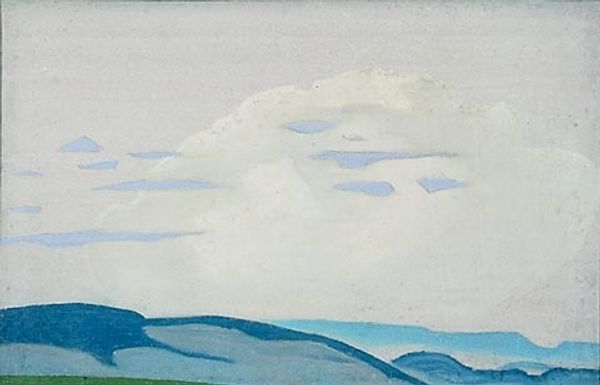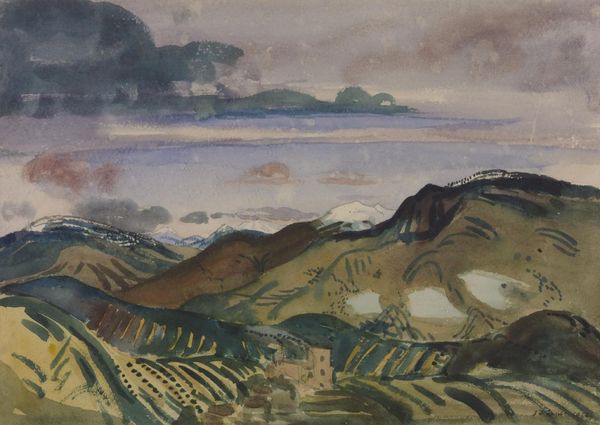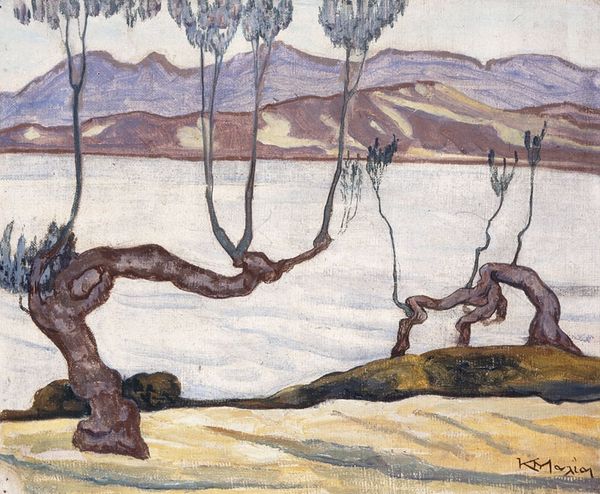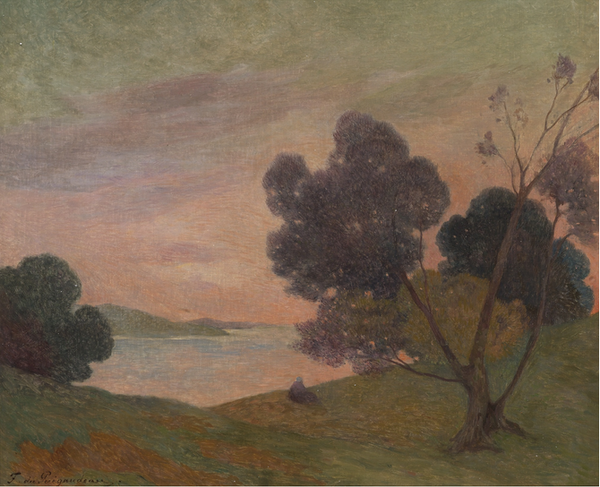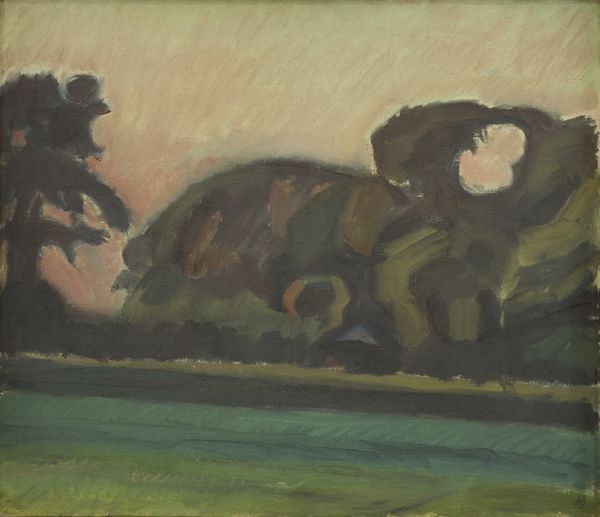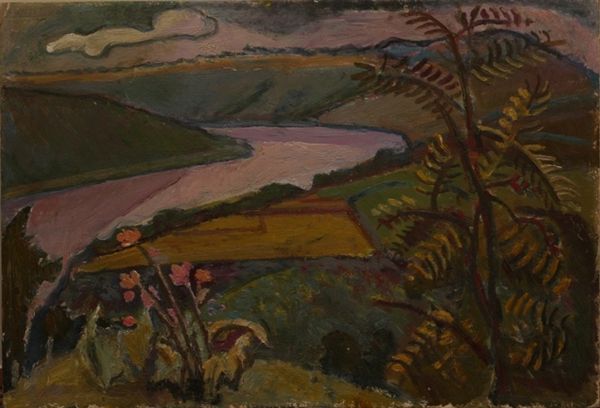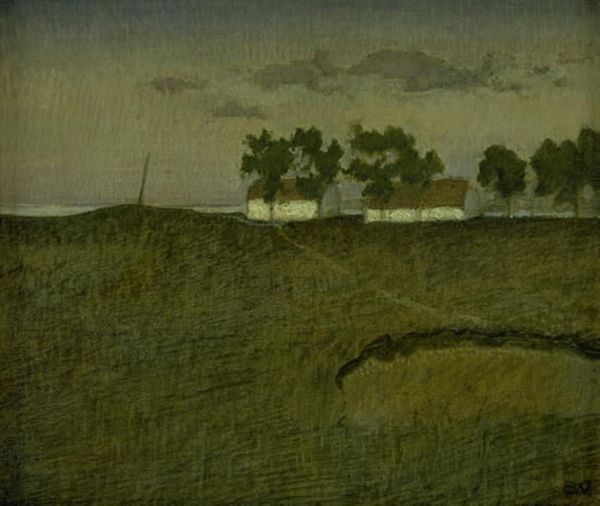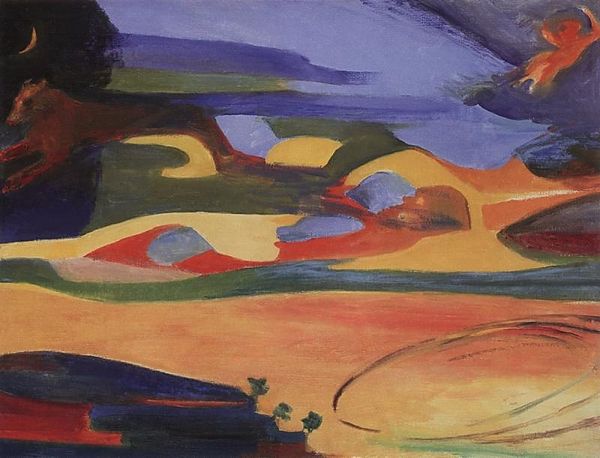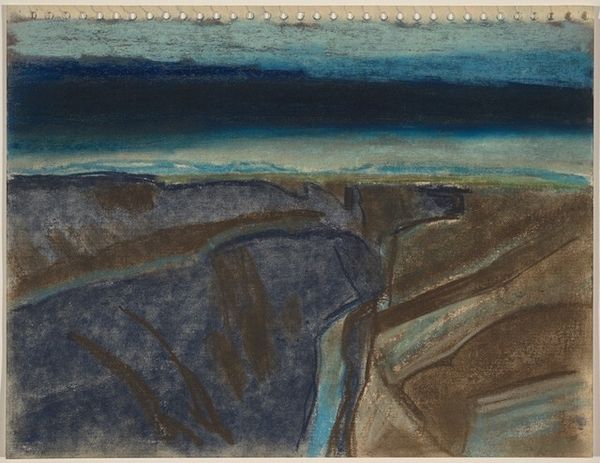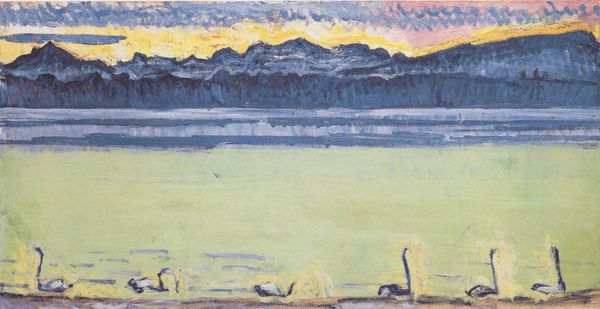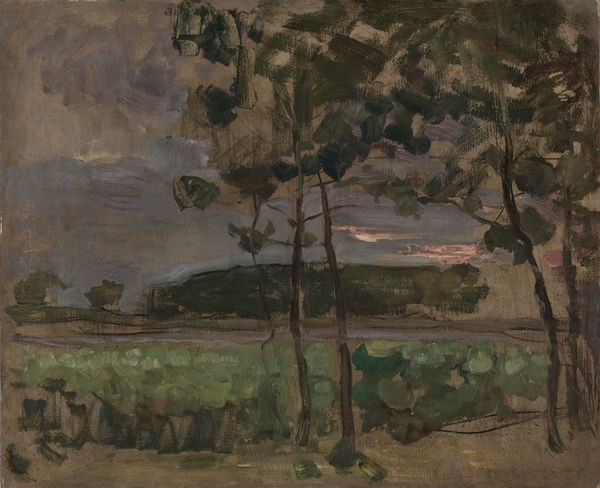
Copyright: Public domain
Curator: What strikes me first about Konstantinos Maleas’s 1920 oil painting, “Methana”, is how muted the palette is; it has this somber feel. Editor: The materiality suggests a roughness, even perhaps the canvas showing through? It's certainly not about illusion, is it? The visible brushstrokes remind us that this is paint, consciously applied to a surface. Curator: The subject is undeniably landscapes—specifically a panorama showing the quiet town of Methana located in Greece. And knowing that Maleas chose to dedicate himself to depicting the Greek landscape brings into focus larger questions of national identity in Greek modernism, especially given the historical context of nation-building at the time. What narratives about belonging does this idyllic rendering encourage? Editor: Yes, it reads on one hand as a postcard but that visible labor – those deliberate marks – disrupt a clean reading. Considering his methods and this choice of oil paint, how might his choice of depicting this area in Greece reflect contemporary concerns and his own situated view of national identity, as a modernist artist working at this moment? It has clear post-impressionist brushwork too. Curator: Absolutely. There's a definite push and pull between an emerging modernist language and an attempt to define what Greek-ness visually means after centuries of Ottoman occupation. His landscapes participate in envisioning a new independent state while negotiating its place in European modernity. And beyond Maleas, there's an entire school of artists similarly preoccupied. Editor: It becomes not only about what is being depicted, but how, and the historical contingencies of both that location and this method of oil on canvas. I find myself also thinking of accessibility – was this art that was made for more private viewership among bourgeois patrons, or perhaps with eventual circulation in the public realm? What impact might this location hold? Curator: Exactly, who did he think would be experiencing these renderings of Greece? And to that end, how does this image both perform and inform a construction of gender within early twentieth-century Greek society? I wonder if situating Maleas within these broader gender and political paradigms offers an even more profound insight. Editor: For me, paying close attention to the paint handling, and the decisions related to making it, yields insights into the moment it was created – that it reflects real conditions of materiality in labor as part of our art history. Curator: Reflecting on it, "Methana" reminds us that landscapes aren't just passive representations, they are charged spaces that actively shape identities and ideologies. Editor: And that artists grapple with real materials and labor when presenting a seemingly passive reflection back at us.
Comments
No comments
Be the first to comment and join the conversation on the ultimate creative platform.
